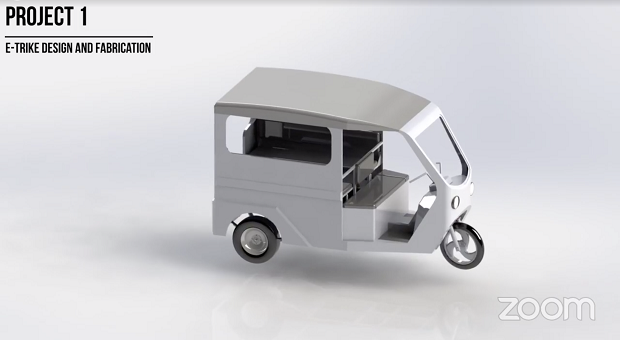With fuel prices again rising to record levels, the Department of Science and Technology (DOST) said it is currently developing an ecosystem of e-mobility solutions for the country’s transportation sector.

E-mobility or electric mobility is the use of vehicles that are fully or partially powered by electricity. It has been garnering more attention worldwide due to the transport sector’s rising carbon emissions and high petroleum cost.
According to the World Resources Institute, transport emissions accounted for 24 percent of global emissions as early as 2016. Worse, the transportation sector’s emissions are expected to grow at a faster rate than any other sector.
The e-mobility projects being explored by DOST-PCIEERD are varied. They include vehicle prototyping, vehicle components, support infrastructure, and battery source storage.
The vehicles under development range from trikes to boats. Electric-trikes (e-trikes) in particular, are one of the main focuses of DOST’s Philippine Council for Industry, Energy, and Emerging Technology Research and Development (PCIEERD).
The Department of Trade and Industry’s 2020 report showed that 83 percent of the vehicles in the country’s electric vehicle market are e-trikes. These e-trikes, however, are mostly imported from China.
With the support of DOST-PCIEERD, the University of the Philippines Diliman (UP Diliman) and the Cagayan State University are working to produce an e-trike that can be manufactured locally. These universities are also conducting studies on the conversion of conventional, gas-powered tricycles into e-trikes.
Additionally, to facilitate the integration of e-trikes into the Philippines public transport system, UP Diliman is working with DOST-PCIEERD on the Intelligent Electric Transportation Program (INTELECT) program.

The program aims to set up a network of e-trikes and charging stations that optimizes energy through fast charging, ride hailing algorithms to choose ideal routes, and a ride-hailing smartphone app to match drivers and passengers.
Next, there is the development of an e-jeepney. The prototype of this vehicle is designed to carry 23 passengers and it has already been field-tested.
Another vehicle is the Flexible Electric Van (FLEV). Planned to transport 12 passengers, this project also comprises a smart system and ride-hailing app that will optimize the van’s routes and charging times.
Lastly, there is the Safe, Efficient, and Sustainable Solar Assisted Plug-In Electric-Boat (SESSY E-Boat). Powered by both plug-in rechargeable batteries and flexible solar panels, the SESSY E-boat is targeted towards local passengers and tourists.
The e-vehicles, though, are only the most obvious part of the system. The DOST is looking at developing an eco-system for e-mobility.
“The e-mobility projects exist as interconnected nodes,” said Enrico Paringit, executive director of DOST-PCIEERD. “E-mobility is not just about creating or producing the vehicles. We are also supporting the projects that support other parts — vital parts — of the ecosystem.”
The other e-mobility projects supported by DOST-PCIEERD are:
- The CHRG Electric Vehicle Technologies’ Charging in Minutes fast-charging stations,
- UP Diliman’s research into electric motors and the possibility of their local manufacture,
- UP Diliman’s research into increasing the energy storage capacity of nickel-iron REB batteries,
- The Advanced Battery Center and Motolite’s research into extending the life-cycle of lead-acid batteries, and
- The Polytechnic University of the Philippines’ research into an aluminum air reactor as an alternative, sustainable energy source.
Taken altogether, these projects are crucial building blocks for the country’s e-mobility transport system. Unlike other countries with clear goals stating when they will transition to e-mobility, however, the Philippines government has not set a target date. Paringit called for a concrete plan that would allow for a faster, surer transition.
“We at DOST-PCIEERD are hoping that this [virtual presser] will encourage all of us today to join us in this inclusive lane towards the Philippines transition towards electric mobility,” he said.
“This is a call to our higher education institutions, our research and development institutions, other government agencies, even private companies, to connect with us to establish initiatives for the e-mobility sector. Together, let us partner in harnessing the power of science and technology, through research and development.”




